Archive
2021
KubaParis
Black Hole, Blind Spot, Dead Angle
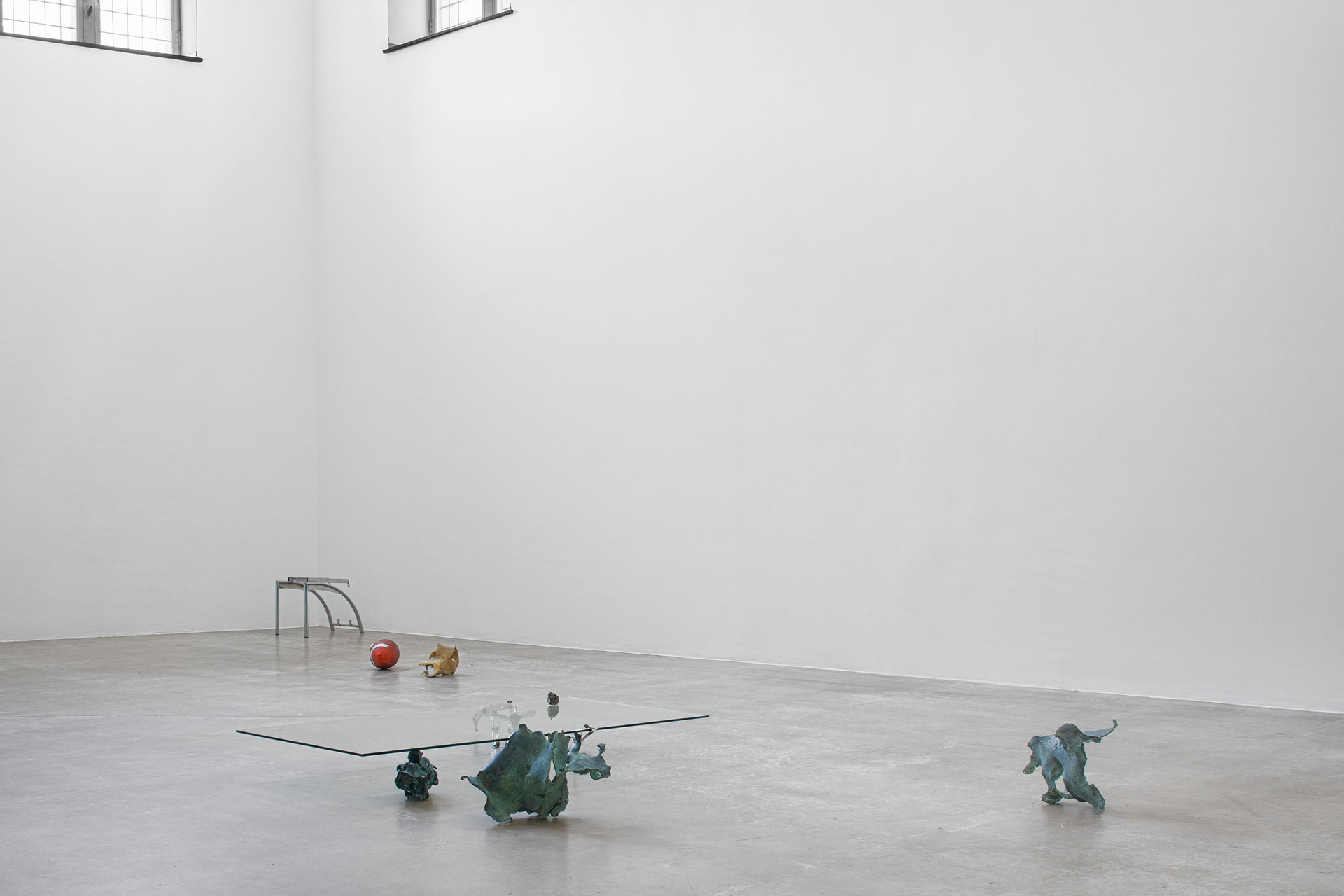

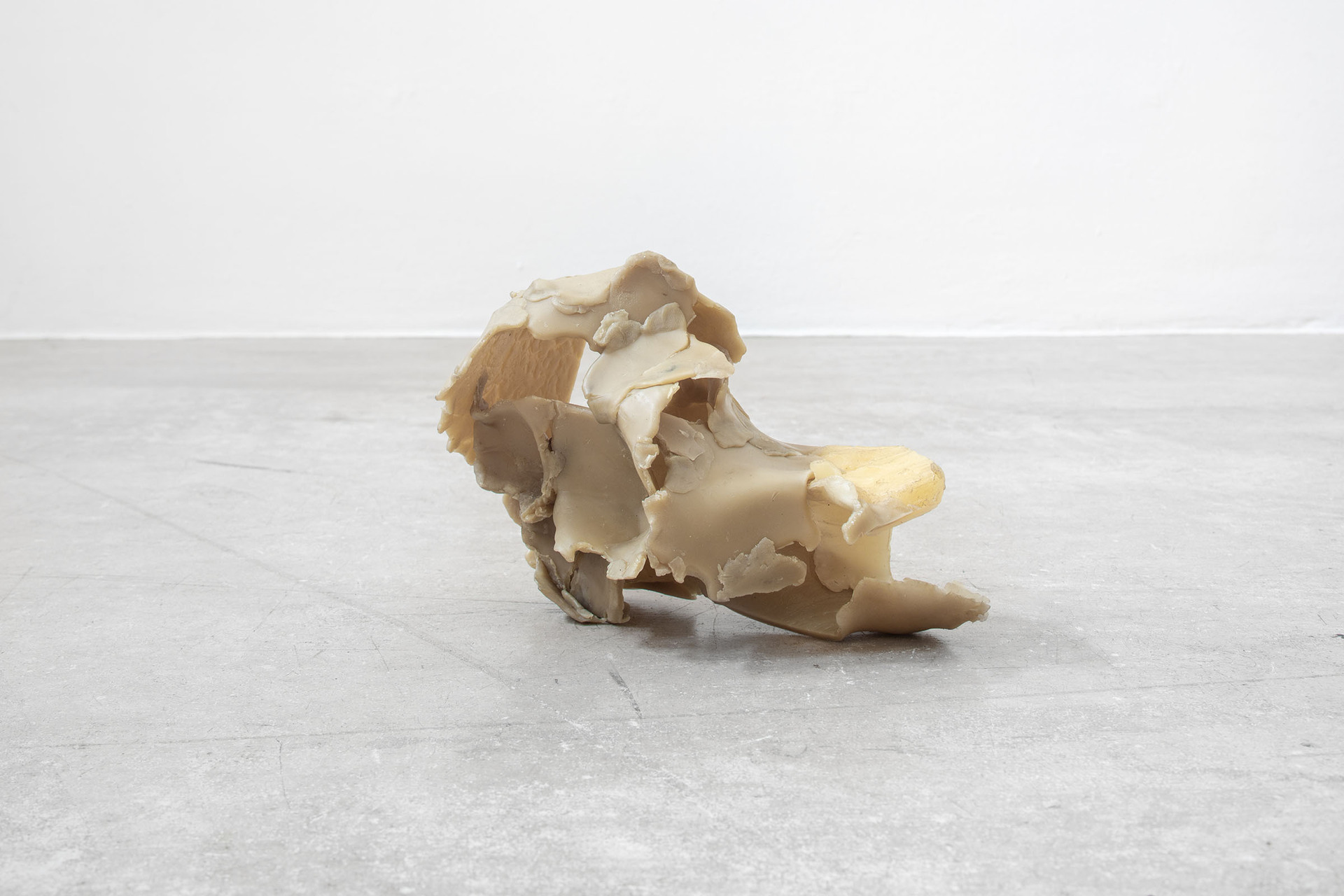
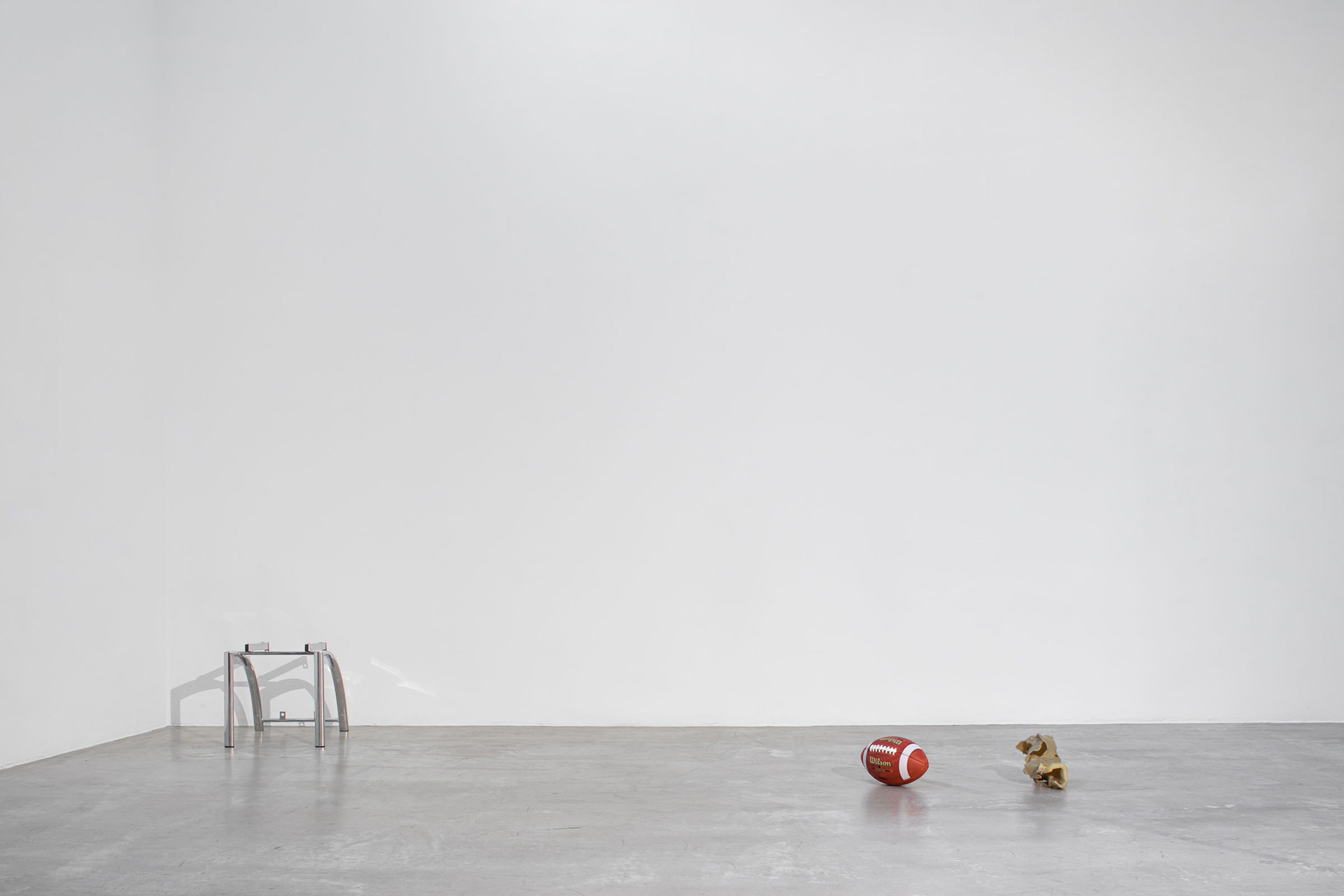
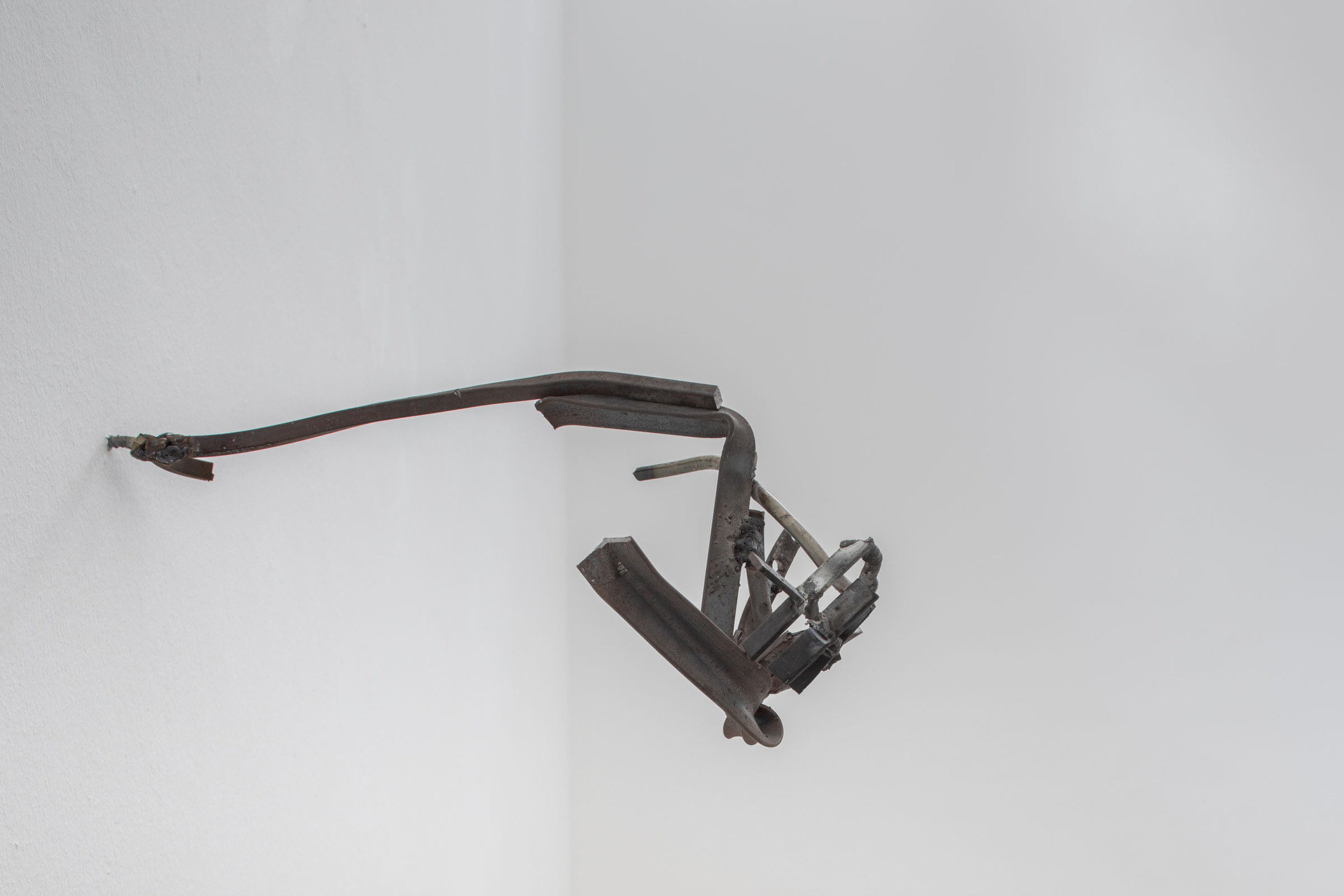
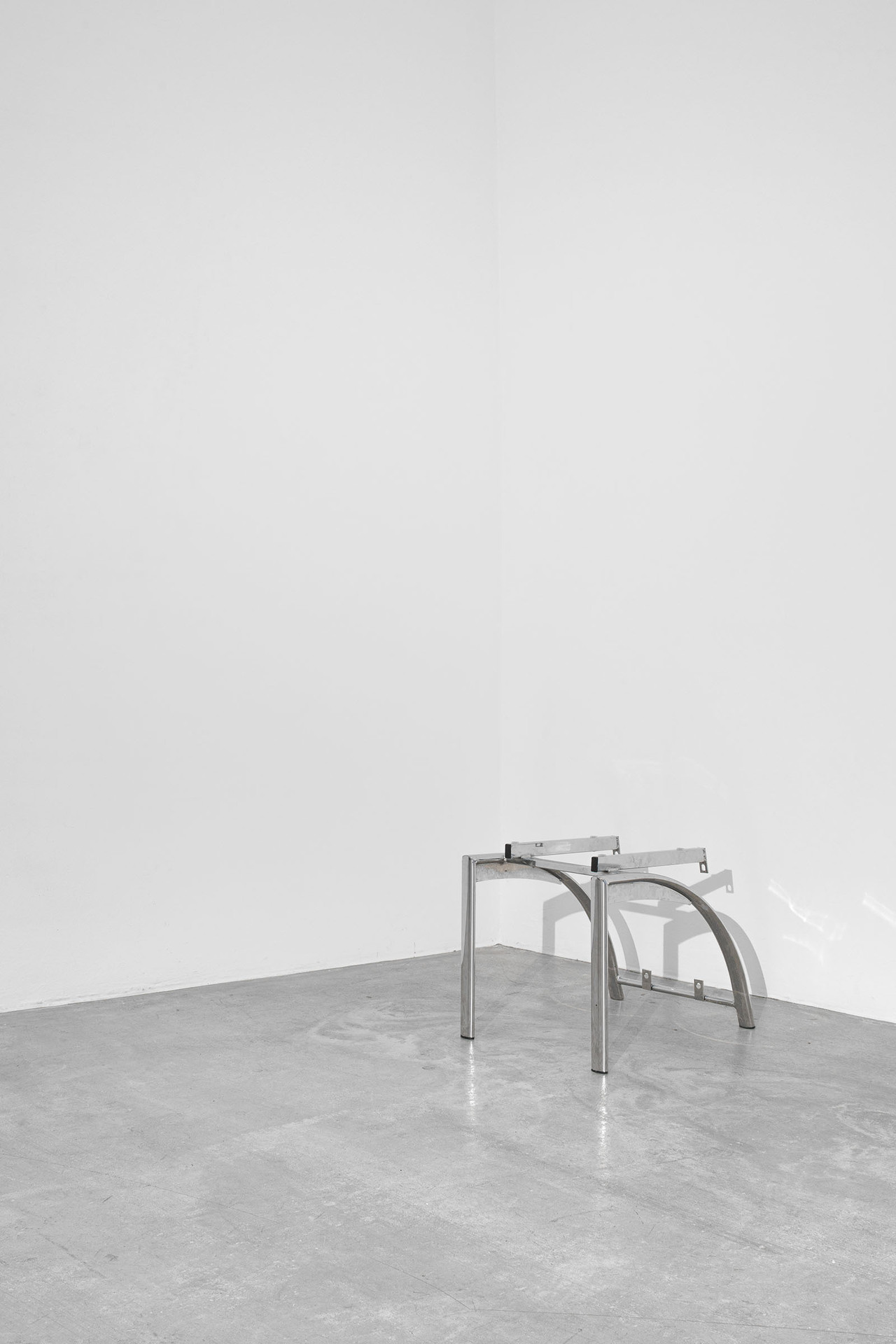

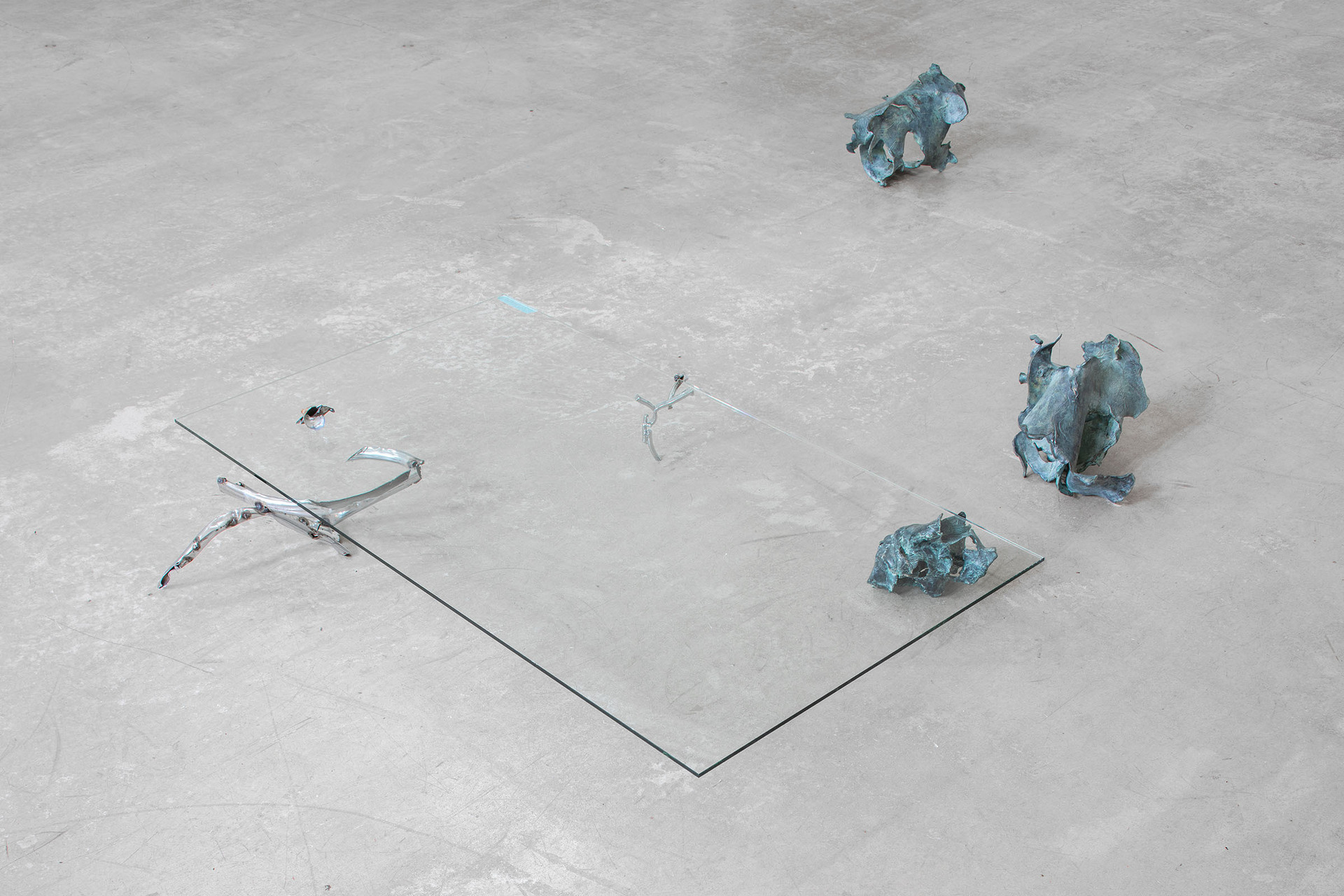
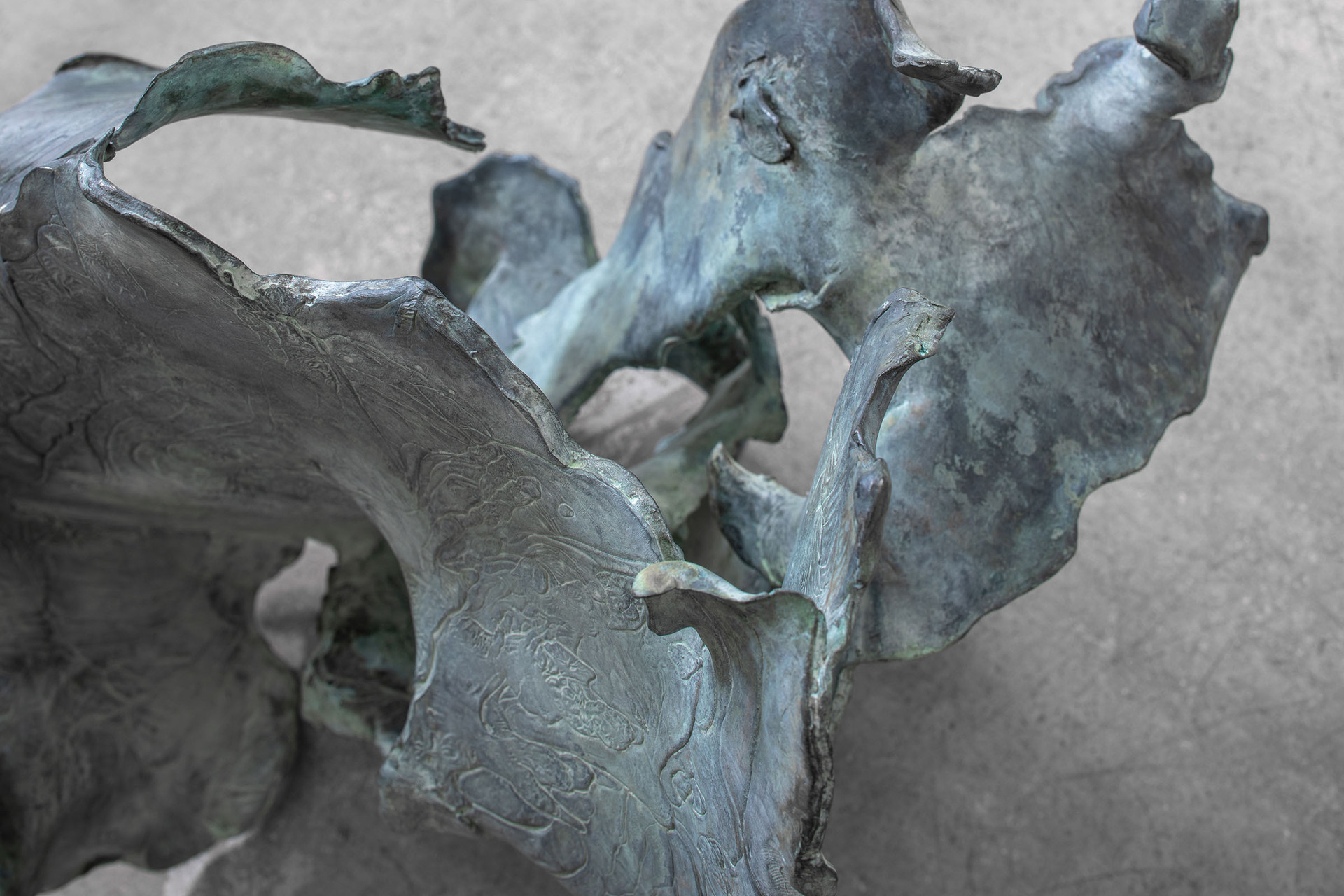
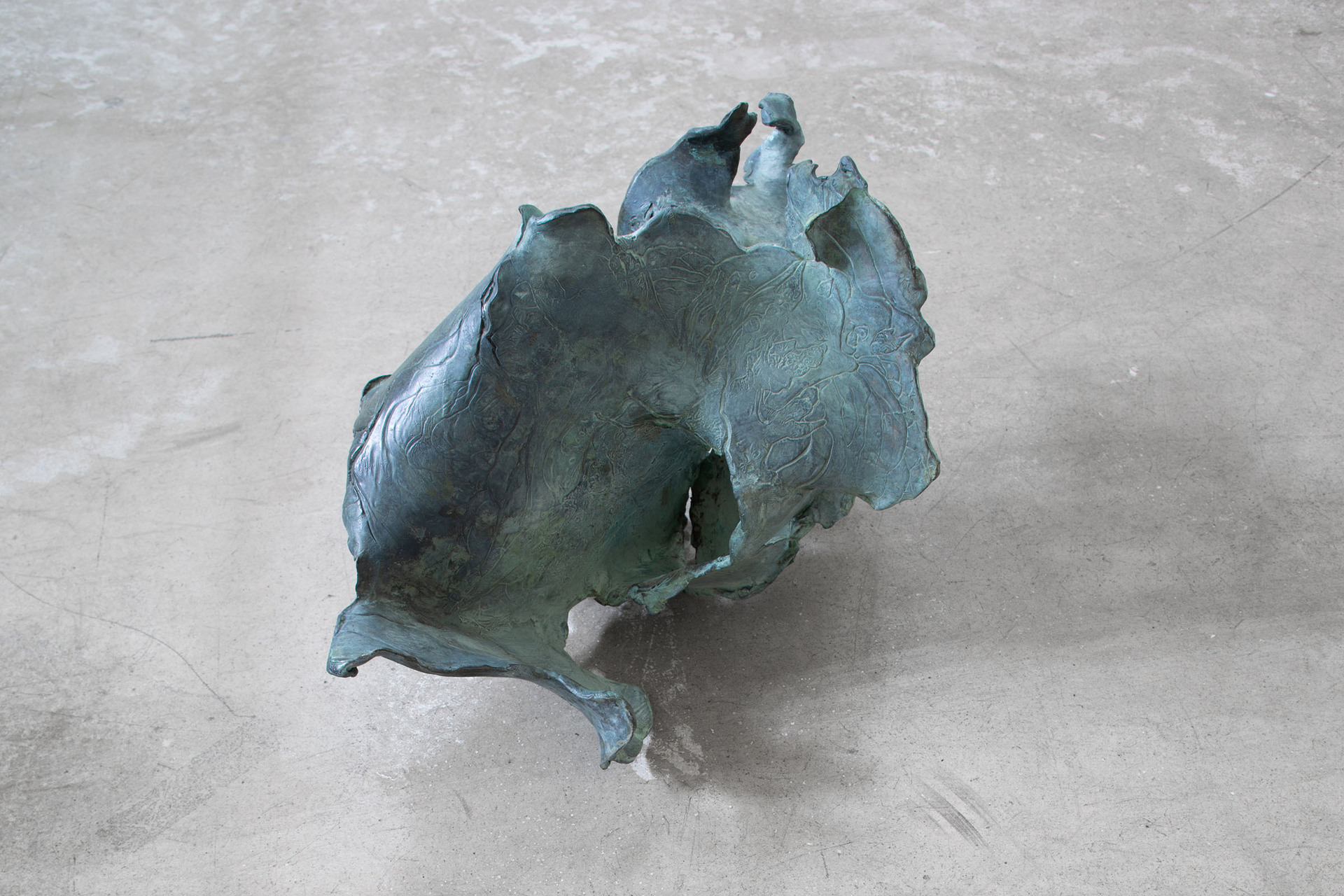
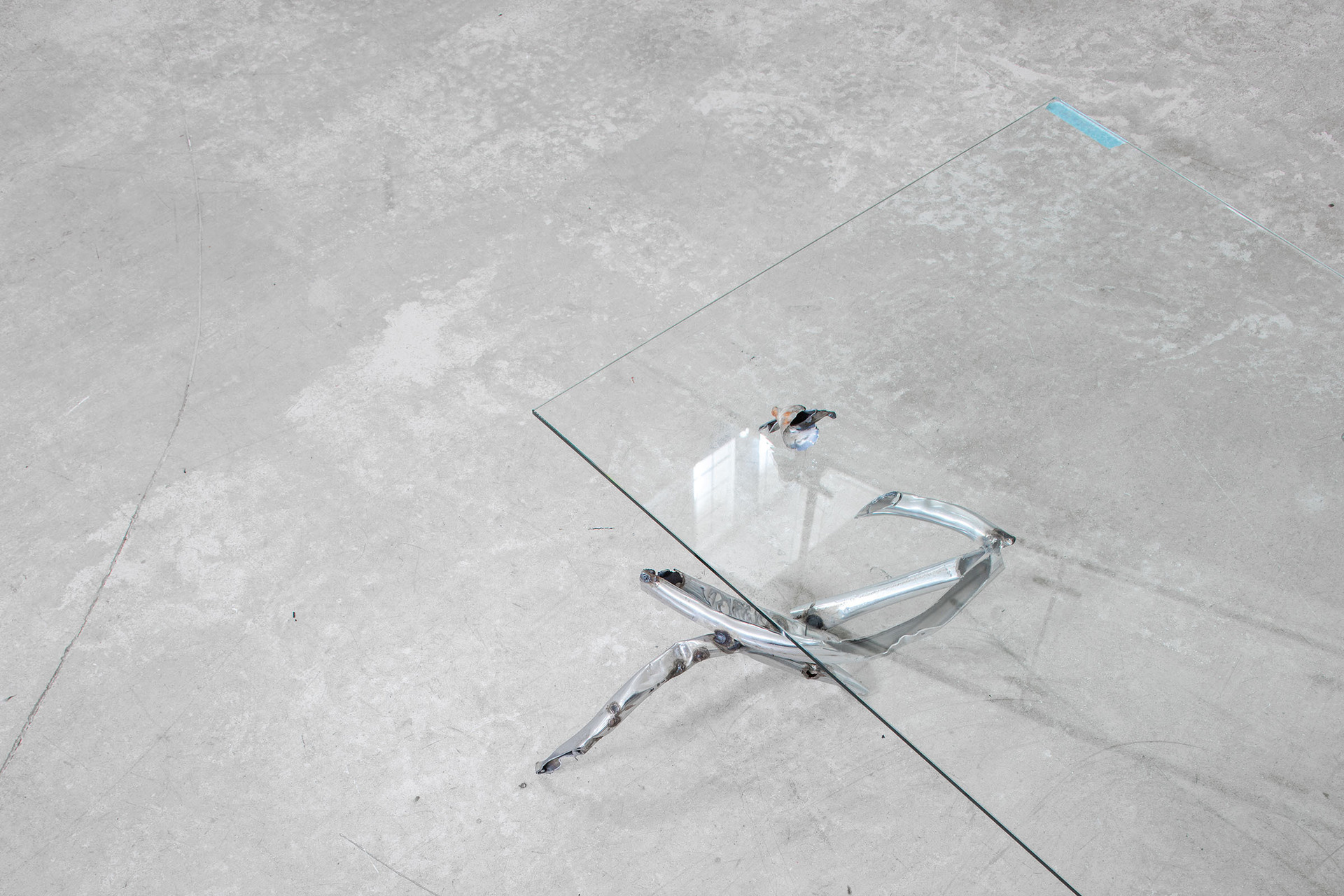

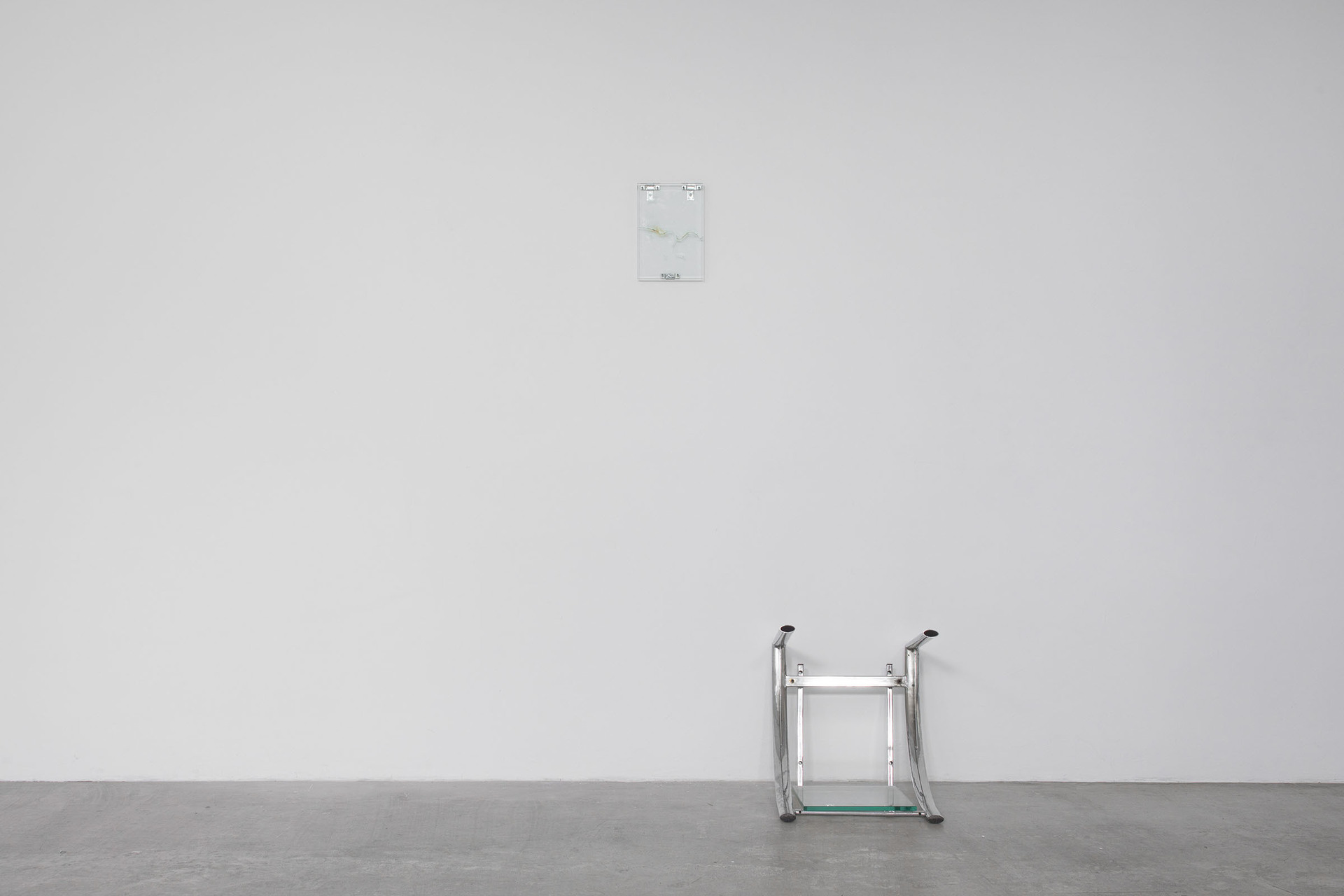

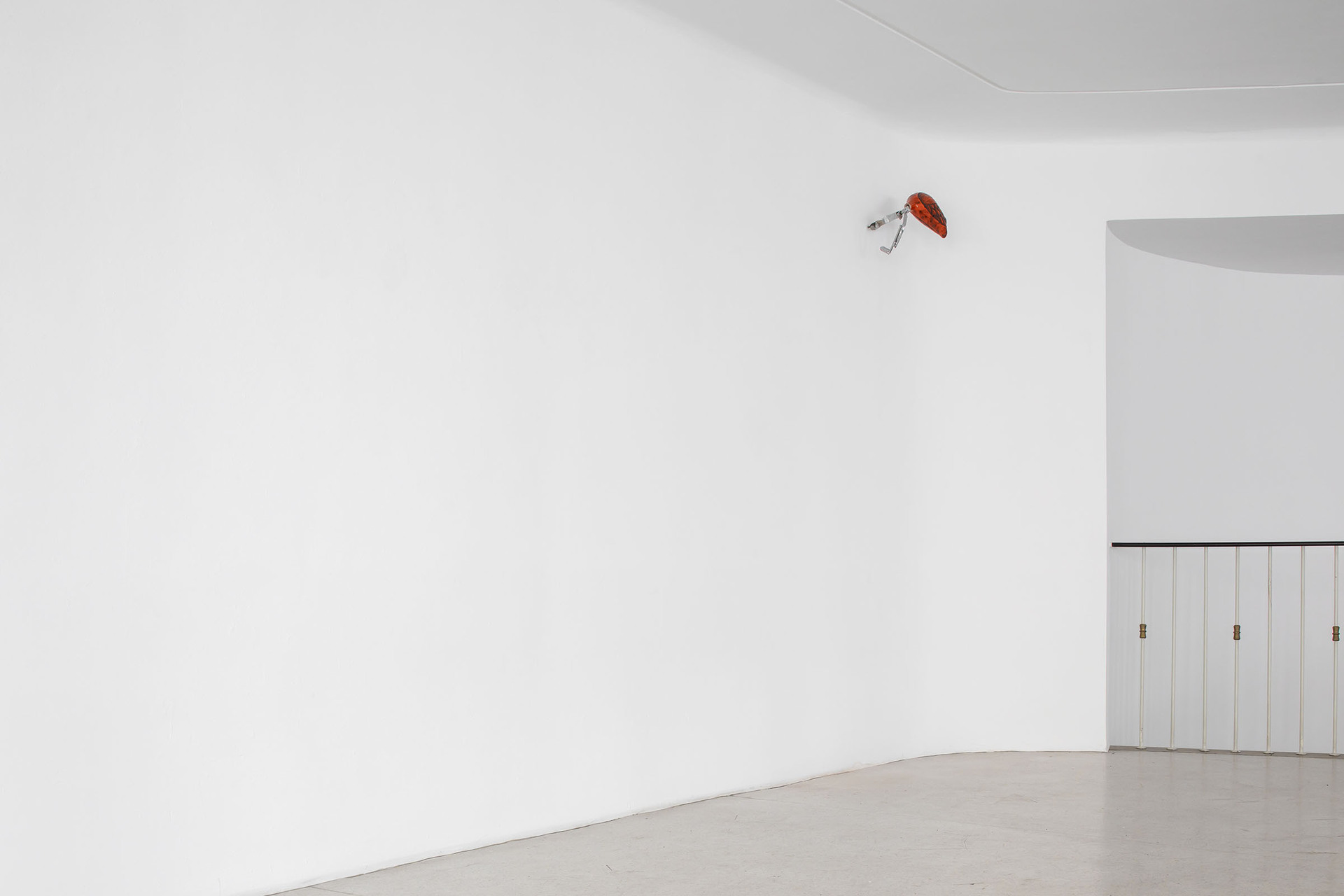



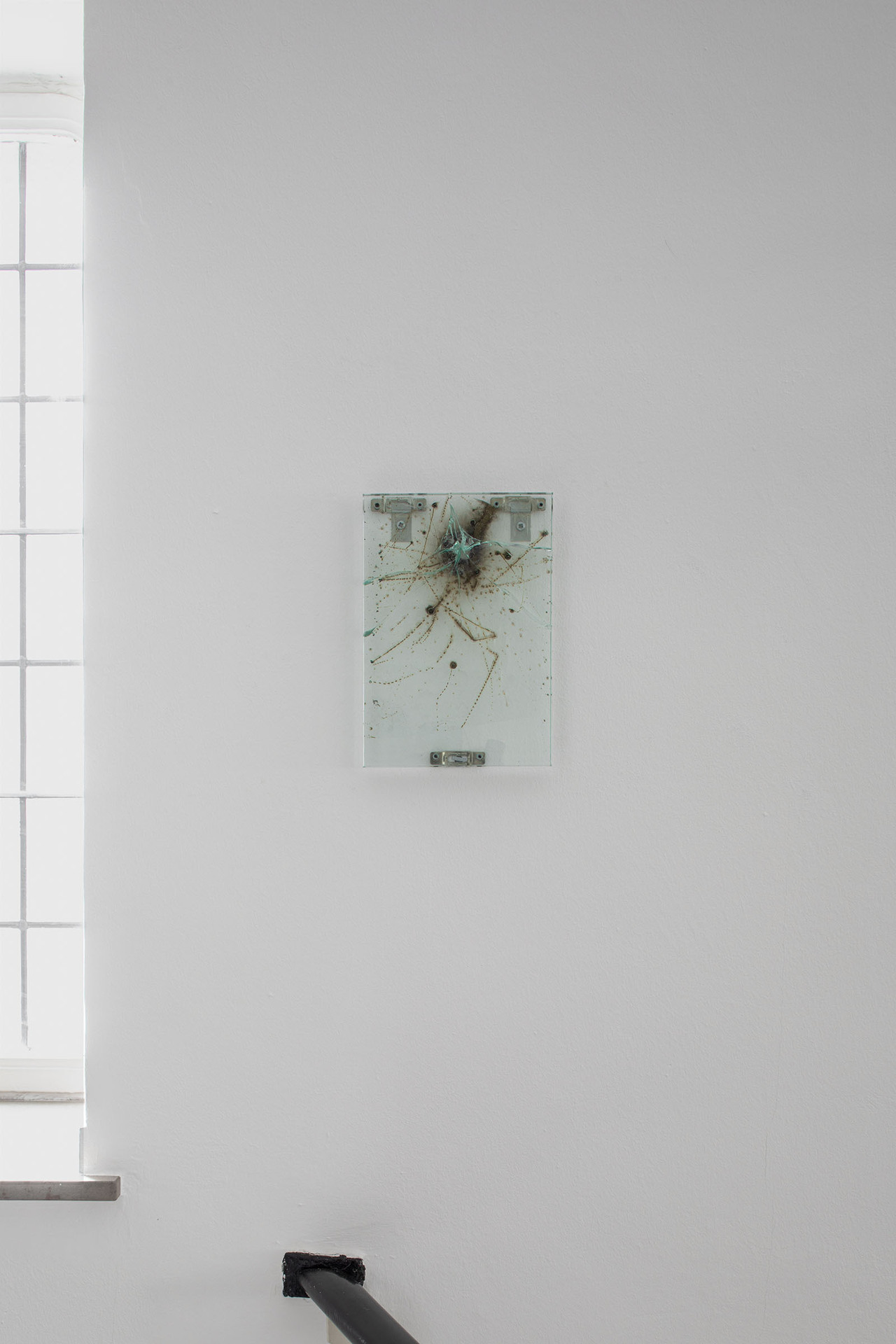
Location
artothek - Raum für junge KunstDate
12.01 –19.03.2021Curator
Astrid BardenheuerPhotography
Jeroen VerrechtSubheadline
Questions about the accessibility of the exhibition are answered by Astrid Bardenheuer, director of the artothek, at 0221/221-22332 or to be found online at www.museenkoeln.de/artothek.Text
Upon entering “Black Hole, Blind Spot, Dead Angle” at artothek – Raum für junge Kunst in Cologne, a constellation of about fifteen objects reveals itself before the viewer. Visible simultaneously from almost any point of the main hall and the spacious gallery above. Glass has been welded upon, a scary looking, sloppy welded lower jaw is screwed into the wall, two graceful carcasses, postmodern chicha-bar chairs put the diagonal axis of the space in brackets. An American Football hovers over the floor, close to a wax body that leads towards a cluster of intimate bronze sculptures. These again surround a plate of glass – as if a central altar - resting on three objects of approximately the same height. Lifting the floor rather than the objects, the transparent surface covers and displays these fragile bodies, its’ reflections referring to the passage above.
The artist, Maarten Van Roy seems familiar with the objects, he wanders the world scouting protagonists (item A) which speak their own particular language: gadgets, artifacts, memories, materials. These very specific entities are of interest to him for their constitution or their transformable nature. He sees their creative potential, their infinite mutability. Let's say he lets these protagonists live inside a dedicated sphere (item B), the floor or the walls of his studio, the outside world, his thoughts. The artist installs a preliminary stage upon which a materialistic narrative can unfold. According to the combination of items A and B, we end up in a network (item C). Perhaps the addition of items A and B postulates an operating system of physical processes. Van Roy is provoking the shock of an object reacting with a space or a particular environment. Like a stage director, he wonders how substances behave when transformed from one state to the next. The elementary particles of matter are in conflict. As much as the artist himself, they as well are growing and disintegrating according to the second law of thermodynamics, entropy. In fact, the title of the show refers to the specific moment where sculpture takes over and is enabled to act to the largest extent.
Like the Crab Pulsar, the rapidly rotating and energy-emitting neutron star at the heart of the Crab Nebula, the ball at “Black Hole, Blind Spot, Dead Angle” executes a gravitational pull that keeps the other objects in steady motion. This comparison is not at all arbitrary. The installation is set up along an axis with three elbows that, spinning similarly to how the earth rotates, perform an elliptical drag. The elbow is a periodical shape in this place; it is to be seen in the two counter-objects, “Dark Spruce” and “Lunar Park”, the latter anticipating the curved end of the wall next to it. It shows up in the chromed steel skeleton underneath the glass surface – the football and the bronzes are elbowed plains all over.
According to their titles, the space's backbone seems to consist of precisely these three kelps, or koi fish-like bronze casts, two of which touch solid ground and a third in near proximity of the galleries' balustrade and a toppled over ceramic swan with similar swagger (and elbowed neck, titled “Iris”). These bronze objects hold a key to the A-B-C alliance. Warm, viscous wax (A) is poured over the cold and wet studio floor (B). The temperature shock causes the material to solidify instantly yet unequally and build a multitude of bumpy textures and flower-like patterns on the bottom side of the slab. The upper side becomes smooth due to the surface tension. While the slab is still warm – we are in the realm of item C – it is turned upside down. The patterns on that side dictate the further course of events. Wherever two streams of spilling molten wax meet, a fragile canyon divides the two. Following these canyons, the slab is torn and folded into a three-dimensional version of the original map. This body of wax then passes through the foundry to undergo the final transformation to another unique lost-wax bronze hypothesis. Throughout the whole process things seem to be getting out of hand. Loss of control and errors are not only embraced, they are provoked. Where does the artists' creation stop and reality start? Is there a separation at all?
There is a video accompanying the exhibition, realized by Philipp Höning (1986, Dortmund) - who also designed the poster and the invitation card - and was commissioned by the artist to interpret his sculptural material (A) and thereby helped set the initial conditions for the project (B). His graphical constructions may be seen as orchestrated perturbations and another chance for Van Roy to overthrow and tighten the network (C). Van Roy states that “in the end, the categories handmade and readymade seem to dissolve. The essence [...], the clash between the urge of doing and the blessings of being done, remains fruitful.” To Van Roy, the nature of an object seems only crucial in the projection of its mutation.
So, let's say A is for “Black Hole” and B is the “Blind Spot”, then “Black Hole, Blind Spot, Dead Angle” is the most recent result of item C. Objects freeze as if after a collapse. We are witnessing a scene in which the bodies' very fragility and the previous operations acted upon them have propelled them into another dimension. So not only in producing or finding, but also in installing the works, Maarten Van Roy aims to conceive a certain density by disregarding scales creating this explosive composition. By capturing ephemeral moments of shape-shifting matter, he transports us to a reality with the help of objects. The universe as we know it – celestial objects and astronomical bodies: star clusters, nebulae, galaxies, asteroids, moons, planets and comets – all consist of the same 118 elements that we witness right here, on earth. “I feel like I am ever more taking part in the tissue of the universe, in the humblest of terms. The less I am preconceiving – the more I let go, the more attentive I am towards the materials I am working with – the stronger my work gets ingrained in that universe and its cycles of life and death.”
Eloi Boucher, Brussels, January 2021
Maarten Van Roy was born in 1985 in Bonheiden, Belgium and currently lives and works between Brussels and Cologne. He studied fine arts at the KASK Ghent and at the Kunstakademie Münster, where he graduated as Meisterschüler of Henk Visch. Van Roy realized solo exhibitions at Spazio Tripla in Bologna, fiebach, minninger in Cologne, Les Brasseurs - Art Contemporain in Liège, MaximiliansForum in Munich, Simultanhalle in Cologne, Heimat in Antwerp, Schmidt & Handrup in Berlin and Boutique - Raum für temporäre Kunst in Cologne. He has received numerous awards, including first prize at Abstracte Schilderkunst, cc Zwaneberg in Heist-Op-Den-Berg, residency fellowships at Cité Internationale des Arts in Paris and Isola Comacina in Italy, and a working fellowship from Stiftung Kunstfonds, Bonn. For 2021 he received a research grant from the Fédération Wallonie-Bruxelles. The exhibition was supported by the latter and the city of Cologne.
Eloi Boucher